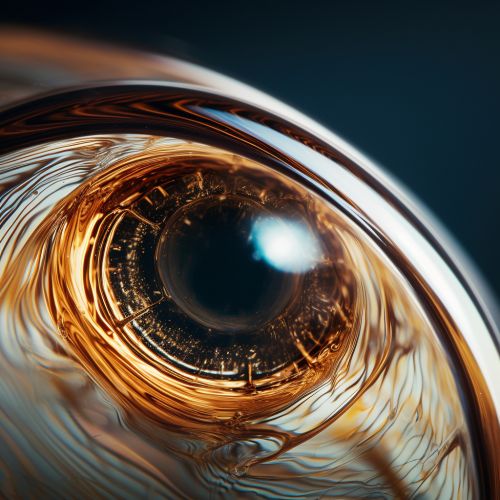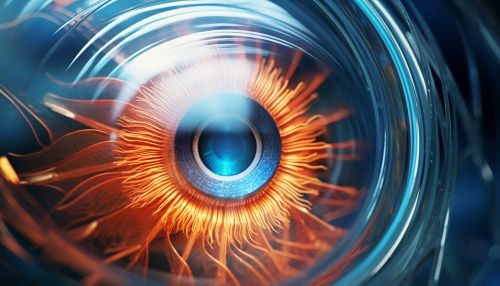Lens (anatomy)
Anatomy of the Lens
The human eye is a complex organ, and one of its most critical components is the lens. The lens is a transparent, biconvex structure located in the eye, helping to refract light to be focused on the retina. The lens, by changing shape, adjusts the focal distance of the eye so that it can focus on objects at various distances, allowing a sharp real image of the object of interest to be formed on the retina. This adjustment of the lens is known as accommodation.


Structure of the Lens
The lens is made up of several layers: the lens capsule, the epithelium, and the lens fibers. The lens capsule is a smooth, transparent basement membrane that completely surrounds the lens. The lens epithelium, located in the anterior portion of the lens between the lens capsule and the lens fibers, is a single layer of cuboidal cells. The lens fibers form the bulk of the lens and are made up of transparent, elongated cells.
Lens Capsule
The lens capsule is the smoothest biological structure known. It is composed of type IV collagen, laminin, heparan sulfate proteoglycans, and several other proteins. The lens capsule provides containment for the lens contents and serves as a barrier to the passage of large molecules.
Lens Epithelium
The lens epithelium is a single layer of cuboidal cells that line the anterior surface of the lens. These cells are responsible for the production and maintenance of lens fibers. The lens epithelium is the only part of the lens that is capable of mitosis.
Lens Fibers
The lens fibers make up the bulk of the lens. These cells, which are transparent and elongated, are tightly packed together and have no organelles. The removal of organelles from these cells during their development is a unique feature of the lens and is a key factor in its transparency.
Function of the Lens
The primary function of the lens is to focus light onto the retina. The lens accomplishes this by changing its shape, a process known as accommodation. When the ciliary muscle is relaxed, the lens flattens for distance vision. When the ciliary muscle contracts, the lens becomes more convex, or rounded, for near vision.
Lens Development
The lens originates from the surface ectoderm. The process of lens development begins in the embryonic stage with the formation of the lens placode, a thickening of the ectoderm. The lens placode then invaginates to form the lens vesicle. As development continues, the cells of the posterior lens vesicle differentiate into primary lens fibers, while the cells of the anterior lens vesicle become the lens epithelium.
Lens Aging and Disorders
As the lens ages, it continues to grow, leading to a decrease in its elasticity and a gradual loss of its ability to accommodate, a condition known as presbyopia. In addition to presbyopia, several other disorders can affect the lens, including cataracts, the most common cause of vision loss in people over age 40. Cataracts are characterized by a clouding of the lens, which can lead to blurred vision and, in severe cases, blindness.
